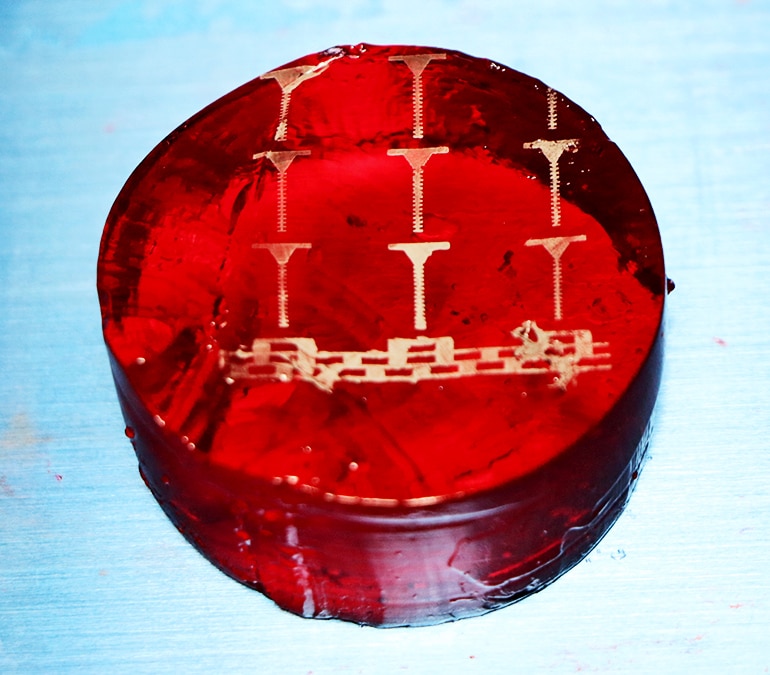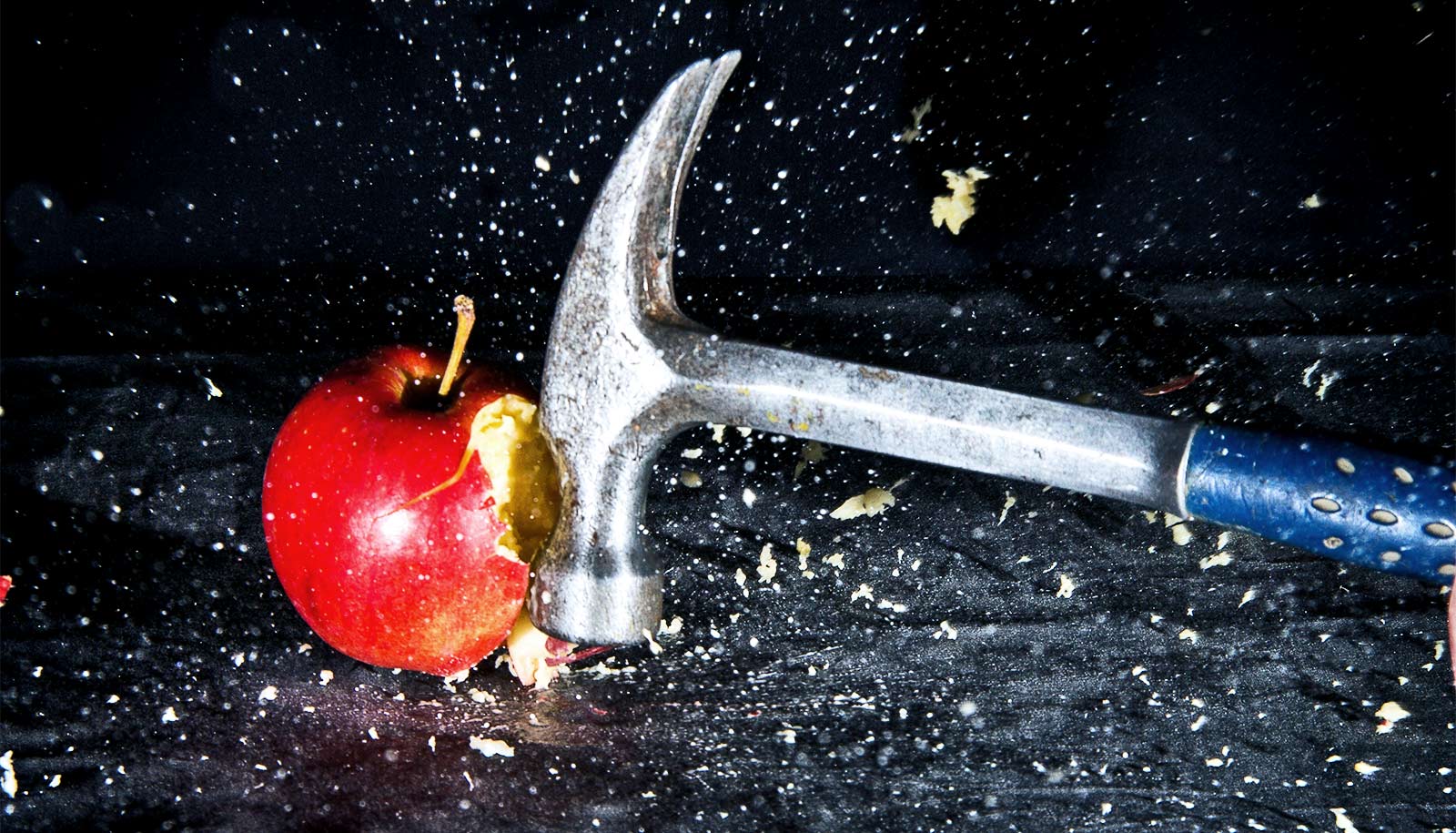A new technology allows printing of conductive metallic lines on all kinds of materials, such as a concrete wall or a leaf.
The technology features liquid metal (in this case Field’s metal, an alloy of bismuth, indium, and tin) trapped below its melting point in polished, oxide shells, creating particles about 10 millionths of a meter across.
When researchers break the shells—with mechanical pressure or chemical dissolving—the metal inside flows and solidifies, creating a heat-free weld or, in this case, printing metallic lines and traces on many different materials.

That could have all kinds of applications, including sensors to measure the structural integrity of a building or the growth of crops. The researchers also tested technology in paper-based remote controls that read changes in electrical currents when the paper curves. Engineers also tested the technology by making electrical contacts for solar cells and by screen printing conductive lines on gelatin, a model for soft biological tissues, including the brain.
“This work reports heat-free, ambient fabrication of metallic conductive interconnects and traces on all types of substrates,” the researchers write in a paper describing the technology in the journal Advanced Functional Materials.
Martin Thuo, an assistant professor of materials science and engineering at Iowa State University, an associate of the US Department of Energy’s Ames Laboratory, and a cofounder of the Ames startup SAFI-Tech Inc. that’s commercializing the new technology, says he launched the project three years ago as a teaching exercise.
“I started this with undergraduate students,” he says. “I thought it would be fun to get students to make something like this. It’s a really beneficial teaching tool because you don’t need to solve 2 million equations to do sophisticated science.”
And once students learned to use a few metal-processing tools, they started solving some of the technical challenges of flexible, metal electronics.
“The students discovered ways of dealing with metal and that blossomed into a million ideas,” Thuo says. “And now we can’t stop.”
And so the researchers have learned how to effectively bond metal traces to all kinds of things, such as water-repelling rose petals and watery gelatin. Based on what they now know, Thuo says it would be easy for them to print metallic traces on ice cubes or biological tissue.
All the experiments “highlight the versatility of this approach,” the researchers write in their paper, “allowing a multitude of conductive products to be fabricated without damaging the base material.”
University startup funds to establish Thuo’s research lab at Iowa State, Thuo’s Black & Veatch faculty fellowship, and a National Science Foundation Small Business Innovation Research grant funded the work. Additional coauthors are from the University of California, Berkeley; SAFI-Tech; Sep-All in Ames; and Iowa State.
Source: Iowa State University



